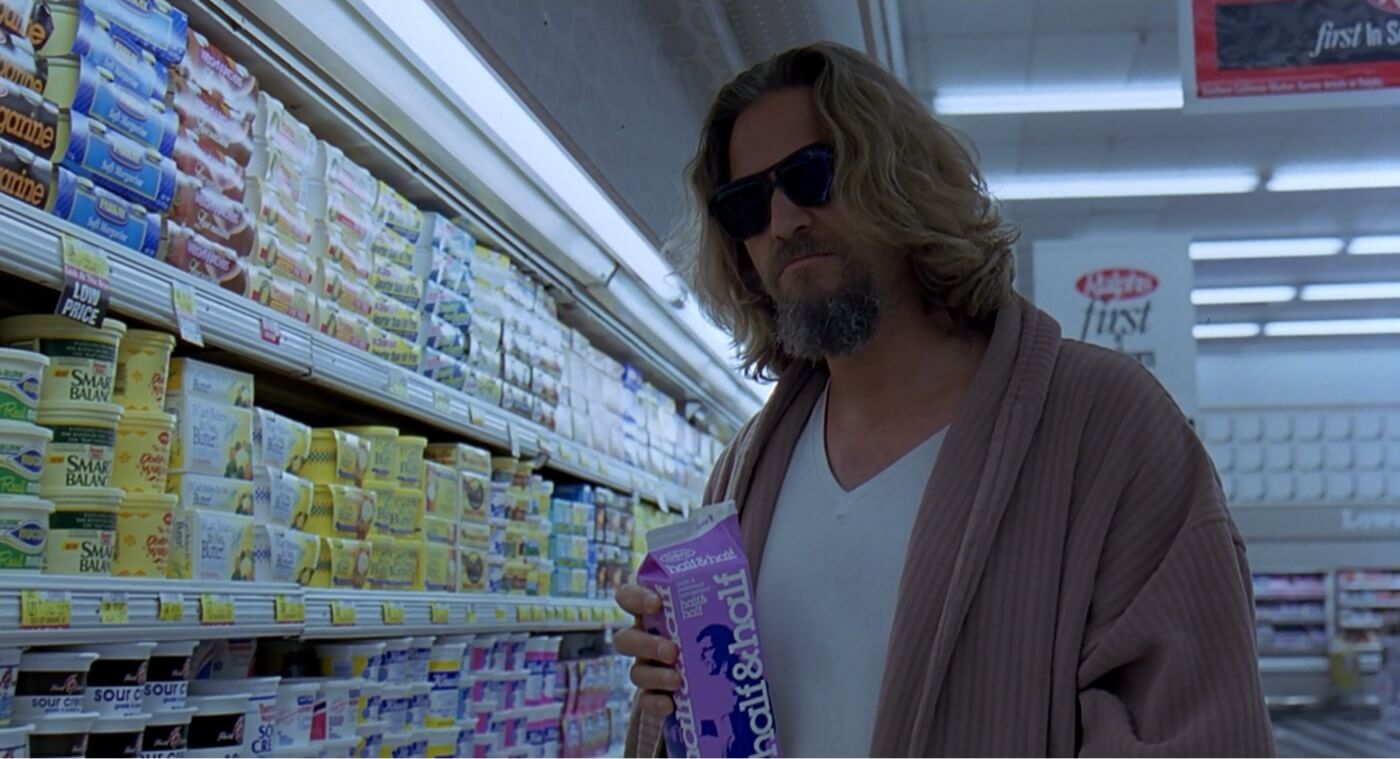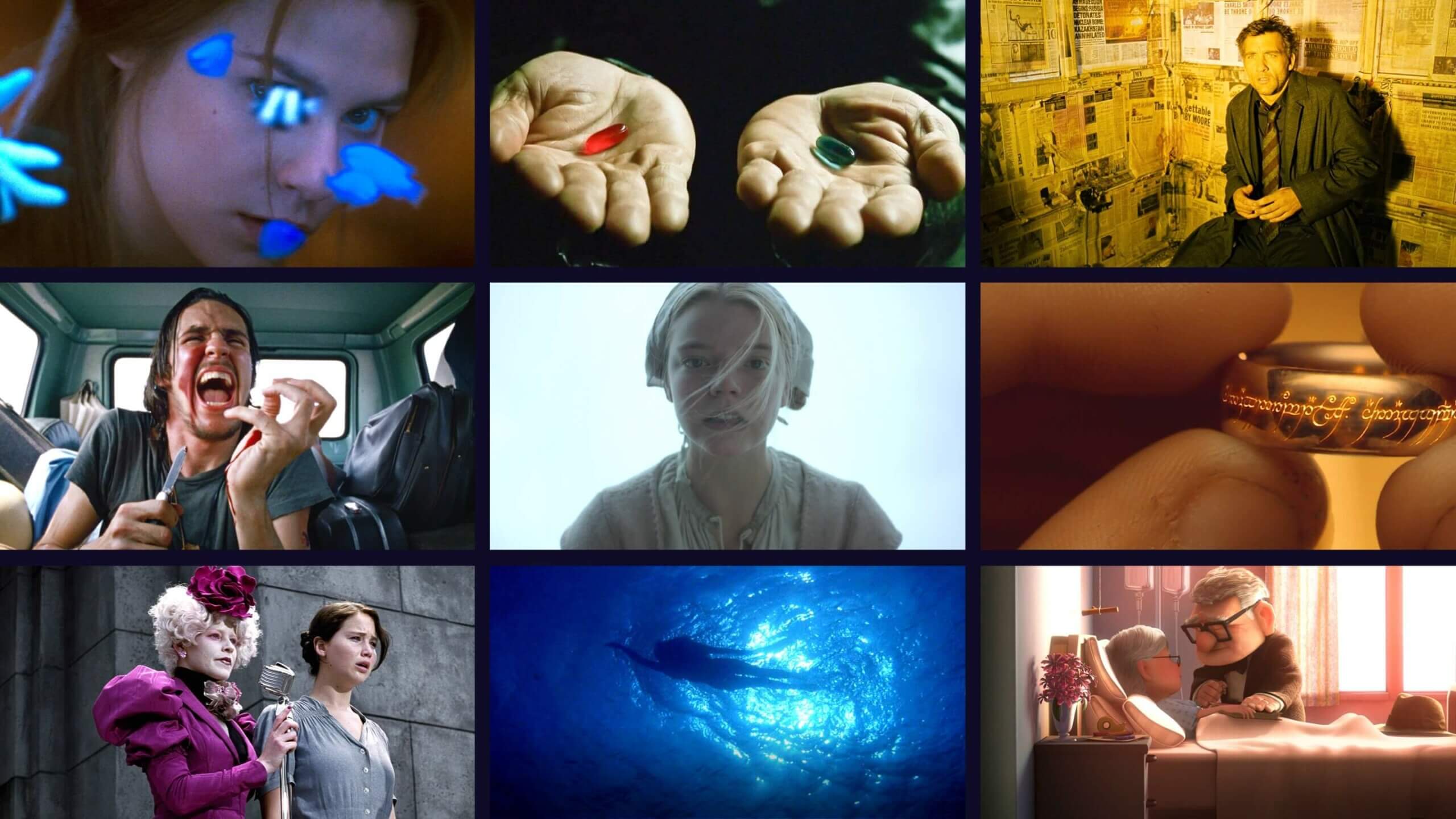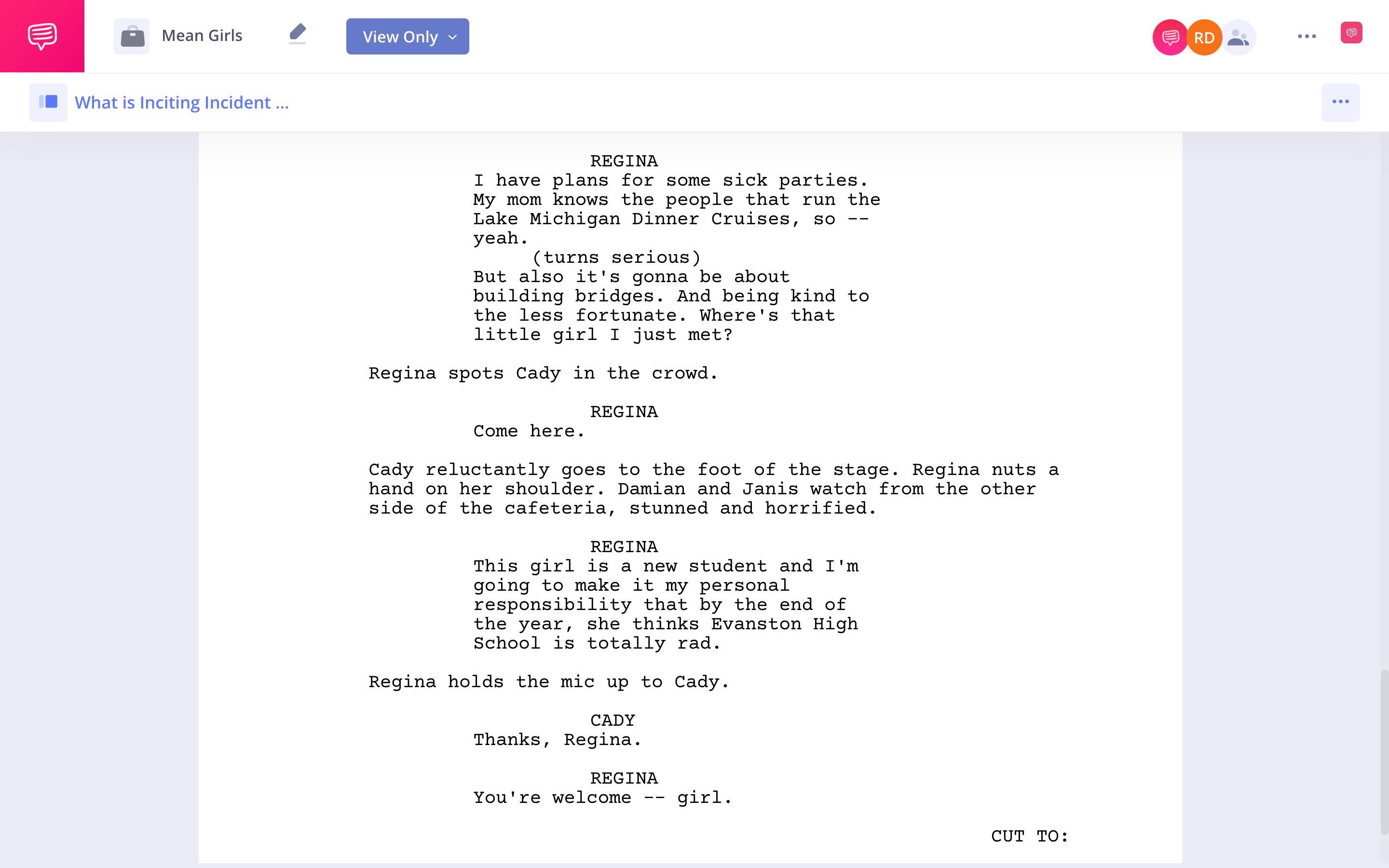An inciting incident is an essential part of every story. But what is an inciting incident and why is it so essential? We’re going to get to the bottom of those questions by defining the term and by looking at examples from Star Wars, La La Land, and more. By the end, you’ll know the inciting incident meaning and how to implement it in your own works.
What is an Inciting Incident
Elements of story structure
What does inciting incident mean? Almost every successful story relies on structure. I’m not saying every story has to use the Save the Cat Beat sheet, the Hero’s Journey, or even the three-act structure – but most (if not all) should use a modified version of a tried-and-true structure outline.
Even if you’re averse to traditional screenplay structure, you should still use an inciting incident. They can be very subtle, but I cannot think of a single film I’ve seen that avoids the inciting event entirely.
Ingmar Bergman’s impossibly-dense Persona? When the two women are sent to the cottage. Andrei Tarkovsky’s parabolic epic Stalker? When the group departs for the zone.
If a story is a car, then the inciting incident in a story is the ignition that sets the car in motion. Without it, you have nothing but a dead battery. Even worse, you have nothing but a heavy-husk. Let’s look at the inciting incident definition.
INCITING INCIDENT DEFINITION
What is an inciting incident?
An inciting incident is an event or decision that kick-starts the plot of a story. Joseph Campbell — author of The Hero’s Journey — famously called the this story beat “the call to adventure.” And although that description is certainly apt for some works, not every inciting incident is as exciting as a quest to save the world; some are as simple as accidentally walking into somebody.
Now that we have the inciting incident definition, let’s look at some types of inciting incidents. What is their purpose?
Story Function
Call to adventure
Inciting incidents work best when characters are thrust into the plot as a result of them. One such example can be found in the original Star Wars script when Leia plants a distress call in R2-D2. This event bridges the gap between Leia’s character arc and Luke’s character arc; therefore inciting a chain-reaction that drives the plot forward.
Some Star Wars fans argue that the inciting moment takes place when the Imperials incinerate Luke’s homestead; which ultimately seals his decision to leave Tatooine and join Ben Kenobi’s mission.
In terms of character arc, that argument certainly holds merit – but in terms of plot, it’s too late in the sequence to be considered the inciting event.
Perhaps it would be helpful to see the chain-reaction to this moment. As you’re watching this next clip, think about how Leia’s distress call entices Ben and Luke, consequently inciting them to act.
Star Wars Example • Inciting incident definition
The original Star Wars screenplay is a masterclass example in how to write a hero’s journey. As such, it should come as no surprise that it has such a well-executed inciting incident plot structure.
What is an Inciting Incident
Types of inciting incidents
Of course, no two inciting events are the same. We can, however, group all inciting events into three overarching categories.
Coincidental
This type refers to an inciting moment which happens essentially randomly. Something happens to a protagonist which is totally out of their control.
In The Man Who Shot Liberty Valance, Ransom just happens to be robbed at gunpoint by Valance. This kickstarts the rest of the story – Ransom becomes hellbent on justice.
In The Big Lebowski, the Dude randomly happens to have the same name as some other random guy. He gets caught up in a mystery much larger than himself purely by chance.

The Big Lebowski
Causal
A causal inciting incident is one which is deliberate. The protagonist makes a choice, or someone specifically targets the protagonist.
In The Beach, Richard decides to find the legendary hidden beach. His decision starts a long and treacherous adventure.
In Knock at the Cabin, meanwhile, Leonard and his gang specifically target Eric, Andrew, and Wen. While Eric and Andrew are the protagonists and don’t have a say in the matter, this is still a causal incident because it isn’t random.
Ambiguous
This is the inciting event which isn’t clear until later. Is this all by chance? Or is it causal?
These types of incidents are great for mysteries. In Fight Club, it’s not clear if the Narrator’s apartment was blown up randomly, or if he was targeted specifically.
Types of Inciting Incidents
Meet cute
Heroic journeys aren’t the only stories that need igniters to kick things into motion – thrillers, dramas, romantic comedies, and more do too.
A meet cute – which we define as “a common scene in romantic films in which the love interests first meet” – is one of the best inciting event strategies for romantic films. This next video explores four different ways that meet cutes make for riveting inciting events.
Writing a Meet Cute • Subscribe on YouTube
The meet cute works best when it incites every following plot point, or contrarily, it mocks the trope-ish formula.
You’ll find the technique in nearly all of the best romantic comedies — for a reason.
Related Posts
Examples in Film
Inciting incident examples
Most narrative films have an inciting event of some sort, even if the writer was conscious of it at the time. Let’s look at some examples.
Mean Girls
Mean Girls is one of the most beloved comedies of all time. Writer Tina Fey expertly crafts an inciting moment by building up to it. Cady, the protagonist who’s just moved to a new high school, is desperate for friends.
She’s been warned by the first two students who took her under their wing that she needs to avoid the Plastics (a.k.a. the mean girls) at all costs.
At first, it seems like Cady might do that, until the inciting event rolls around. Let’s take a look at the moment in the Mean Girls screenplay, which we imported into StudioBinder’s screenwriting software:
Mean Girls screenplay
Fey creates a big moment for the inciting incident – it’s in front of the whole crowd of students. This is the drama we’re looking for in inciting action.
In their brief interaction, we learn about Regina (she has the school in the palm of her hand), and we also understand why Cady chooses to ignore the advice she’s received.
Regina has validated her in front of the entire school. She’s done a nice thing – as a new student, it’s impossible to disregard that. Fey emphasizes the importance of the moment with a hard cut to Cady sitting with the Plastics. She’s in.
Ted
For all of its hijinks, Ted actually follows a very conventional three-act story. The inciting event is when Lori tells John he needs to kick Ted out of the house.
If you look at the runtime of the film, this may feel quite late, but that’s because much of the opening is an extended prologue/credit sequence.
Jerry Maguire
Jerry Maguire’s structure is a little more complex, since it’s simultaneously a sports movie and a romance. But it’s hard to deny the inciting moment is Maguire’s firing, which results in him scrambling to keep clients and, ultimately, starting his own agency (the break into act two).
It Follows
It Follows is about a curse which is transferred from person to person via sex. It only makes sense, then, that the inciting event is when the protagonist has sex with a man plagued with the curse. The rest of the first act is her reckoning with this fact.
Related Posts
How to Create an Inciting Incident
How to come up with an inciting incident
Many people wonder “how do I write an inciting incident?” And that’s a great question – an inciting incident in a story can make or break a reader’s attachment to the story.
My advice? The starker the better. Readers should always be able to recognize an inciting event in a story (even if they’re not conscious of it in the moment).
Think The Hobbit when Bilbo leaves the Shire, think The Wizard of Oz when Dorothy is transported to the land of Oz, etc. These moments work because they clearly define a tonal shift; more so, they make us feel like the story is moving forward.
This next video from Abbie Emmons breaks down how to write inciting incidents in further detail.
When should inciting incident occur
The most valuable advice I can give you on “how to write an inciting incident” is this: always, always, always start with a problem.
No story works without conflict. The stronger the inciting event, the greater the conflict. The greater the conflict, the more-satisfying the resolution.
Related Posts
Up Next
Best Inciting Incident Examples
There’s no doubt about it: inciting incidents are utterly essential to scripts. What are the best inciting incident examples? Fear not, in our next article, we break down the best examples, with examples from Jaws, Network, and more. By the end, you’ll know how screenwriters like Robert Towne and Paddy Chayefsky mastered their art.

